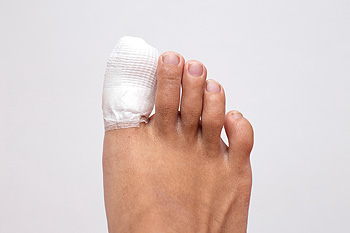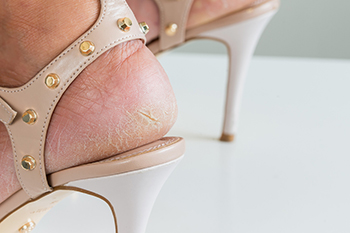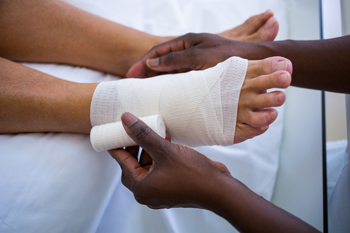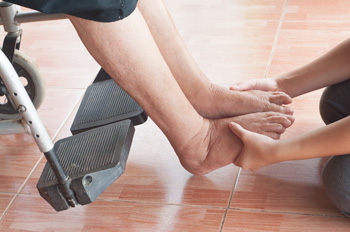
A broken toe can be painful. It happens suddenly from dropping a heavy object on it, or from stubbing it into a piece of furniture. It is difficult to walk on, and will often be swollen and bruised. The first thing to do if you have broken your toe is to keep weight off of it. Elevating the toe may reduce some of the swelling, and a visit to the podiatrist is recommended. Mild breaks can benefit from using the buddy taping method. This is done by taping the broken toe to the toe next to it. This typically provides the stability that is necessary for proper healing. More severe breaks may require surgery, especially if the bone is protruding through the skin. Arthritis may gradually develop if the toe joints are affected, which can complicate the fracture. If you have broken your toe, please contact a podiatrist as quickly as possible who can correctly diagnose and treat a broken toe.
Broken toes may cause a lot of pain and should be treated as soon as possible. If you have any concerns about your feet, contact one of our podiatrists from Lewis Wolstein, DPM, P.C. & Associates. Our doctors will treat your foot and ankle needs.
What Is a Broken Toe?
A broken toe occurs when one or more of the toe bones of the foot are broken after an injury. Injuries such as stubbing your toe or dropping a heavy object on it may cause a toe fracture.
Symptoms of a Broken Toe
- Swelling
- Pain (with/without wearing shoes)
- Stiffness
- Nail Injury
Although the injured toe should be monitored daily, it is especially important to have a podiatrist look at your toe if you have severe symptoms. Some of these symptoms include worsening or new pain that is not relieved with medication, sores, redness, or open wounds near the toe.
If you have any questions, please feel free to contact our office located in Co-Op City, NY . We offer the newest diagnostic and treatment technologies for all your foot care needs.





